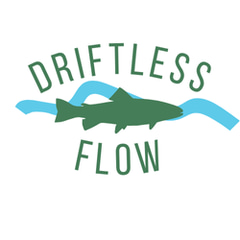How to Read a Driftless Stream in the Spring
Tips for finding the fish!
HOW-TOS


If you’re new to fishing the Driftless (or even if you’re not), knowing how to read a stream is a skill that will put more trout in your net—especially in spring when conditions can shift fast.
Here’s a no-nonsense guide to reading spring creeks in the Driftless, with tips that actually work out here.
1. Start With the Structure
Look for:
Deep runs and pools early in the morning.
Seam lines where fast water meets slow.
Undercut banks—these are goldmines in the Driftless.
2. Watch the Sunlight
On sunny days, fish will slide into riffles and shallower water to feed. On cloudy days, they may stay deep all day. The water warms faster in sunlight, which kicks off bug activity and gets trout feeding.
3. Follow the Temperature
In April, water temp is everything. Bugs and trout both key into that 48–52°F range. Bring a thermometer and check the temps mid-morning. If the water’s cold (below 45°F), stay deep. If it’s warming, look for rises and drifting insects.
4. Approach Stealthily
Clear water means spooky fish. Stay low, wear drab clothing, and don’t slap your line down. A 9-12 foot leader helps keep your fly from landing too close to your fly line. Don't be afraid to crawl to the edge of the water or scoot on your butt to avoid being seen.
5. Use the Driftless “Drift Test”
Here’s a local trick: toss in a dry leaf and watch how it drifts. That tells you where your fly will go. Follow that same path with your cast—it helps dial in natural presentations, especially with dry flies and emergers.
The Driftless rewards patience and observation. Take your time, slow down, and let the stream tell you where the fish are. The more time you spend watching the water, the more you’ll understand how to fish it.
